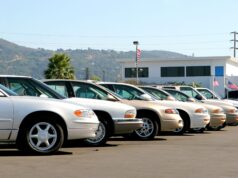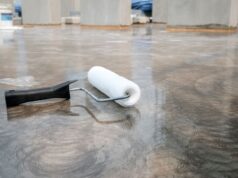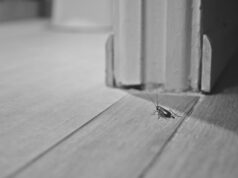
Whenever we end up crashing our car, we hardly do a thorough assessment of the damage. We merely look at the more visible damages, like large dents or broken windscreens, and don’t bother looking into anything else. However, this should not be the case.
When a car is involved in an accident, you must run a proper inspection on it. This will allow you to clearly identify the parts that have been damaged and need repairing or replacement. It’ll also help you check whether the type of damage is covered by your insurance.
So in case you ever crash your car, be sure to ensure these 8 things.

#1 Are the lights broken?
When you end up hitting another car or object, or something hits you from the back, it’s usually the lights that have to take the impact head-on. And given how these lights are made, they can break quite easily.
The headlights, taillights, as well as your indicators, are all made of polycarbonate plastic these days. Although the material itself is tough, its integrity deteriorates over time, making it vulnerable to crash-related damages.
Driving with broken lights in the dark is not only risky but also considered a major driving offense in the States, including California (California Vehicle Code 24250 VC).
#2 Does the windscreen need repairs or a complete replacement?
Windscreens can be damaged quite easily in an accident. And based on the scale of this damage, you’ll have to decide whether you want to get a windscreen replacement or a simple repair job.
Windscreen repairs are much cheaper. Small chips or cracks on the glass can be fixed with ease and will leave no mark on the screen. However, large-scale damages, where the entire glass has been shattered, will always require a complete windscreen replacement job.
To learn more about windscreen repair and replacement, and which one you should opt for after crashing your car, you should check out https://www.vision-windscreens.co.uk/.

#3 Do the doors (as well as the hood and trunk) close properly?
High-speed collisions can damage the car’s body frame. It can also dislocate the frame or sections of it. This, in turn, means that certain parts of your car will no longer fit or stay in their original place, like your car’s doors.
Usually, after a car crash, if any of the doors don’t close properly, we end up assuming that there’s something wrong with it. However, we should also consider the possibility that it’s the car’s entire body frame that’s been damaged, and the door won’t stick properly because of it.
Apart from the doors, you should also check in on the car’s hood and trunk. Make sure that they too aren’t suffering from the same problem. Also, while you check the doors, you should take a good look at the side view mirrors. Give a hard tap on them just to see if they’re wobbly or anything of that manner.
#4 Locating dents and scratches
Dents and scratches are some of the easiest things to spot in a car (in most cases at least). Naturally, the side of the car involved in the accident will have all the dents and scratches that you’re looking for. The sizes of these dents, however, will vary depending on the collision. Some dents and scratches can be seen from a mile away. On the other hand, some of them can’t be seen even up close. You’ll have to feel them with your hand to know of their existence.
Dents on the front or rear bumper are the easiest to fix. At the same time, they’re the ones that can be damaged the most. A bad crash might even require you to change the bumper completely.
Take a look at this blog to get a quick overview of how you can protect your car’s front bumper from being extensively damaged.

#5 Are there any leaks?
Sometimes, even the smallest of impacts can lead to cracks or tears in the fuel pipes. Checking for leaks is actually quite easy. All you need to do is drop down on your knees, and take a good look at your car’s underside. If a leak does exist, it won’t be hard for you to spot it. You’ll also be able to smell the fuel.
In most cases, leaks need to be taken care of by a complete replacement of the pipe. Getting it fixed, on the other hand, will only provide a temporary solution.
Check out this page to learn more about how you can check your car’s fuel pipes.
#6 Did the airbags deploy?
If it was nothing but a minor bump with another vehicle or telephone pole, the airbag shouldn’t have deployed. However, if the crash was somewhat major, and despite that, the airbags failed to deploy, that’s when you should know that there might be a problem.
Go to a mechanic and have the airbags checked. Because in the near future, in case you have a major accident and those bags don’t deploy, you’re likely to end up with some really bad injuries.

#7 Checking the electrical and electronics
This includes everything from the car’s control switches, to the radio or CD player. In case of a serious impact, there’s a possibility that some of the car’s electrical connections may have been severed. A quick rundown on all the electricals and electronics in your car should help you understand whether such a break in connection took place or not.
#8 Engine and brake check
If you’re not that well-oriented with the mechanics of your car, you should leave this part to actual professionals. Take your car to a workshop, explain the situation to a mechanic, and have them look things over, especially the engine and the brakes.
Once you’ve made these checks, you can then evaluate the damage, and decide how you want to proceed with it.









